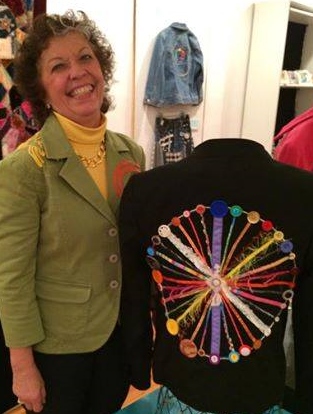Creative Coping Tools for CASIGYs and Skills to Use Them.
This begins Strategy #4 in the series, “7 Strategies to Cope With the Differences of Being a Creative, Highly Sensitive or Gifted Person”
Creative Coping Tools and skills to use them comprise Phase I of the CASIGY Cycle of Encouragement that I mentioned in my previous blog post.
As a CASIGY, you may feel the need for coping tools suited to your creativity, sensitivity, intensity and intelligence. You may have tried many other coping tools for yourself or your children, only to find them ineffective or even aggravating to an already difficult situation. Because so many of my clients over the years have shared with me experiences of this kind, I have developed (with their guidance as to what was helpful to them) coping tools attuned to CASIGYs’ unique needs.
Together these tools form a pyramid, the Personal Power Pyramid (click here for a printable copy). They have helped many CASIGYs to  cope with the difficulties that accompany being creative, sensitive, intense or gifted. They also are “Tools for the Journey”, the hero’s and heroine’s journey that we mentioned in Strategy #3. These tools form ten steps that together build Emotional Core Strength. We’ve heard of building physical core strength; this is the emotional equivalent – becoming strong on the inside. Emotional resilience comes as we develop both emotional core strength and flexibility.
cope with the difficulties that accompany being creative, sensitive, intense or gifted. They also are “Tools for the Journey”, the hero’s and heroine’s journey that we mentioned in Strategy #3. These tools form ten steps that together build Emotional Core Strength. We’ve heard of building physical core strength; this is the emotional equivalent – becoming strong on the inside. Emotional resilience comes as we develop both emotional core strength and flexibility.
Ten year old Samantha came to see me after having many emotional eruptions that interfered with her ability to do her school work. These outbursts also began to alienate her from her friends at school. After ‘climbing’ just the first few tiers of the Personal Power Pyramid, she told me that she felt much better about herself, and felt more in charge of herself and much less out of control. Her mother reported that her relationships with her sister, peers and teachers improved significantly.
Like any pyramid, you ‘climb’ this one from the bottom up. In the previous strategies, we have been discussing Foundation Stone #1, the “Big Picture” about CASIGYs, their uniqueness and the ups and downs that often accompany their differences. We’ve covered Foundation Stone #2 – how it helps some CASIGYs to think of themselves as being like race horses rather than defective draft horses. If you have children who are CASIGYs, you may want to share some of these ideas and tools with them. Foundation Stone #3, Monkey-See-Monkey-Do is about how to do that successfully. We humans learn best by mimicking people doing what we want to do. So to help your children use these tools, learn and use them yourself first, then pass them along, and continue to use the tools along with your children.
Nine year old Billy came to see me because he would dissolve in tears “for no reason” at school and at home. His teachers and parents noticed how detrimental this was to his relationships with his classmates and wanted to help him learn better coping skills so he could feel better, manage his emotions, and maintain his friendships. After practicing these tools and developing these skills for a few months, Billy’s mother reported that he was no longer imploding. They had learned how to prevent many of the problematic situations, and he had developed mind-body skills to use when trouble came.
We live in an age in which it is not okay to have emotions, and is especially not okay to express them. Those who do express them are often told that they are being “too emotional”. So what is an intense CASIGY to do? Squelch or stuff their emotions? Too often, that results in those pent up emotions eventually erupting in emotional volcanoes, right in our classrooms and living rooms. Or a flood of tears shows up, or even worse, and iceberg forms and we are frozen out.
This last foundation stone shows us that emotions are like ocean waves. Emotion is energy flowing through us, just like saves are energy flowing through the ocean. And just as it doesn’t work very well to try to fight an ocean wave, it doesn’t work very well to fight our waves of emotion. What does work well with both is to flow with them and to facilitate their flow through us. How do we do that? The first four tiers of the Personal Power Pyramid show us how. We’ll focus on these tiers here.
just like saves are energy flowing through the ocean. And just as it doesn’t work very well to try to fight an ocean wave, it doesn’t work very well to fight our waves of emotion. What does work well with both is to flow with them and to facilitate their flow through us. How do we do that? The first four tiers of the Personal Power Pyramid show us how. We’ll focus on these tiers here.
Step #1 is to ask ourselves, “What’s happening? Or as my kids used to say, “Wha’s Up? Identifying the events of our day, the highs and lows of our day is like identifying the weather that’s happening on the beach. This step is one that most of us already take. We get together with coworkers for lunch and talk about what’s been happening. We call our friends and describe the events of our days. Our kids tell us what happened at school or on the playground. We connect over dinner and share what happened during our day. We talk about the ‘weather’ in our lives. What we often don’t do is talk about how this metaphorical weather impacts us physically and emotionally.
Step #2 of the Personal Power Pyramid asks us to move into what may be difficult territory. This is Taboo Territory, to be exact. As we have discussed, having emotions and expressing them is taboo in most current world cultures. We often get the message that we are supposed to ignore our emotions, pretend they don’t exist. We are admonished, “Don’t be sad.” “Don’t cry.” “Don’t be mad.” “Don’t be so emotional.” Of course we don’t want our emotions to influence or control us, or our children’s emotions to control them. But often we go at this completely backwards, especially when we are intense, highly sensitive or when we have intense, highly sensitive children.
So the task of this step is to identify how we are feeling, emotionally AND physically, and to help our children do the same with theirs. Physical and emotional feelings often go together. To to this, it can be as simple as asking, “What are the highs and lows of our emotions? What emotions are we feeling, or have we been feeling lately? [or are feeling now]?
Step #3 is to ask ourselves, How BIG is this wave of emotion? On a beach, waves come in different sizes  and have different characteristics. In our lives, waves of emotion also come in different sizes and have varying characteristics. Typically, it’s the big waves of emotion that quickly catch our attention, or that of those around us. It can be helpful to identify how big of a wave is this because we relate differently to big waves than we do small ones. It can also be important to give a warning sign to others around us about the size of waves that are crashing on our inner beach.
and have different characteristics. In our lives, waves of emotion also come in different sizes and have varying characteristics. Typically, it’s the big waves of emotion that quickly catch our attention, or that of those around us. It can be helpful to identify how big of a wave is this because we relate differently to big waves than we do small ones. It can also be important to give a warning sign to others around us about the size of waves that are crashing on our inner beach.
If you have been on a beach where there’s a flag flying to inform everyone about the size or characteristics of the waves today, you may have already experienced the benefits of being able to give an instant warning that everyone ‘gets’. Beaches around the world that use this system post green flags for small waves, and anyone can go in the water; yellow or orange flags for medium waves when small children and the elderly should not be in the water
It can help to fend off trouble when you say “I’m apologizing in advance. I’ve got HUGE waves crashing on my inner beach today.” And your coworkers or family members are likely to thank you, and know to not take personally anything you say or do when you’ve got that happening on your inner beach.
Step #4 is to answer the question, How can I Channel or Express this Wave of Emotion? It’s one thing to allow ourselves to become aware of our emotions and physical sensations. It’s something else again to know what to do with them and how to do it. This lack of knowledge and skill can lead you to ask, “How do I learn this? Where can I get these skills?” At same time, you may also have another inner voice yelling (or whispering) “Whoa there! Let’s not go too fast!” This inner conflict is quite common.
Our resistance reminds me of the taboos that exist against feeling and expressing our emotions. As a result of these taboos, we have been taught (to change the metaphor) to dam up the river of our emotions. It’s no small thing to change this. We’re afraid that we will have to dismantle the dam on our inner river, or that if we let our emotions loose, that they will flood and break down the dam and destroy our lives and the lives of those around us.
These are valid concerns. If you’ve ever been around someone whose inner dam has burst, you don’t want to repeat the experience. If it’s happened inside of you, and your emotions have taken control of you, leading to saying or doing things that have hurt yourself or others, you also don’t want to go there again.
So how do we go about making a change like this?
Very carefully.
A little at a time.
 To follow the metaphor of the dam on a river, to prevent river dams from overflowing, structures are built into the dams to prevent them from flooding, overflowing or bursting. Flues that are built into the dam let small, measured amounts of water flow out; this one simple structure prevents all three catastrophes. And in our lives, we need structures and tools to open up the flow of our emotions and prevent catastrophe as well. They can’t prevent every possible catastrophe, but they can avert most. A Hundred Year Flood can still come along. But barring such drastic phenomenon, we can safely, in a limited and controlled way, open up the flow of emotion and energy in our lives. How can we do this, and teach the children in our homes and classrooms how to do this? Over the years, I have developed a tool that does facilitate this. It seems so simple that it’s almost silly. But it’s not easy. The culture’s rules about not feeling body sensations or emotions, and not expressing what we feel are so pervasive, that we continually encounter the inner barriers we have learned to build. So it can be helpful to have a tool with a process that’s simple to follow.
To follow the metaphor of the dam on a river, to prevent river dams from overflowing, structures are built into the dams to prevent them from flooding, overflowing or bursting. Flues that are built into the dam let small, measured amounts of water flow out; this one simple structure prevents all three catastrophes. And in our lives, we need structures and tools to open up the flow of our emotions and prevent catastrophe as well. They can’t prevent every possible catastrophe, but they can avert most. A Hundred Year Flood can still come along. But barring such drastic phenomenon, we can safely, in a limited and controlled way, open up the flow of emotion and energy in our lives. How can we do this, and teach the children in our homes and classrooms how to do this? Over the years, I have developed a tool that does facilitate this. It seems so simple that it’s almost silly. But it’s not easy. The culture’s rules about not feeling body sensations or emotions, and not expressing what we feel are so pervasive, that we continually encounter the inner barriers we have learned to build. So it can be helpful to have a tool with a process that’s simple to follow.
I like to call this tool the Daily TNT, or as one of my teenage clients dubbed it, the Daily Dynamite.  TNT, as you can see, comes from “Tune iN Tool”. (Click here for a printable copy) Here’s how it works: You write a brief version of what we’ve just been talking about. There’s a column to write “What’s Happening” and another column to write “What/how am I feeling, being sure to include both body sensations and emotions. It doesn’t matter which side of this you start on. You can start with whichever one is most present in your consciousness. It usually helps to also connect them, since in life they often are connected.
TNT, as you can see, comes from “Tune iN Tool”. (Click here for a printable copy) Here’s how it works: You write a brief version of what we’ve just been talking about. There’s a column to write “What’s Happening” and another column to write “What/how am I feeling, being sure to include both body sensations and emotions. It doesn’t matter which side of this you start on. You can start with whichever one is most present in your consciousness. It usually helps to also connect them, since in life they often are connected.
My experience, both personally and with my clients, is that it’s best to make this a daily habit or practice. Using the Daily Dynamite doesn’t have to take more than five to fifteen minutes a day. This is the “Cliff Notes” version. It’s one way to open up a little flue on your inner dam, to let out small, measured amounts of emotion on a frequent basis, as we discussed earlier. This is a safe way to begin to get in touch with and to express your emotions, and help your children identify and express theirs.
In my next blog post, we’ll continue exploring more Creative Coping Tools.

